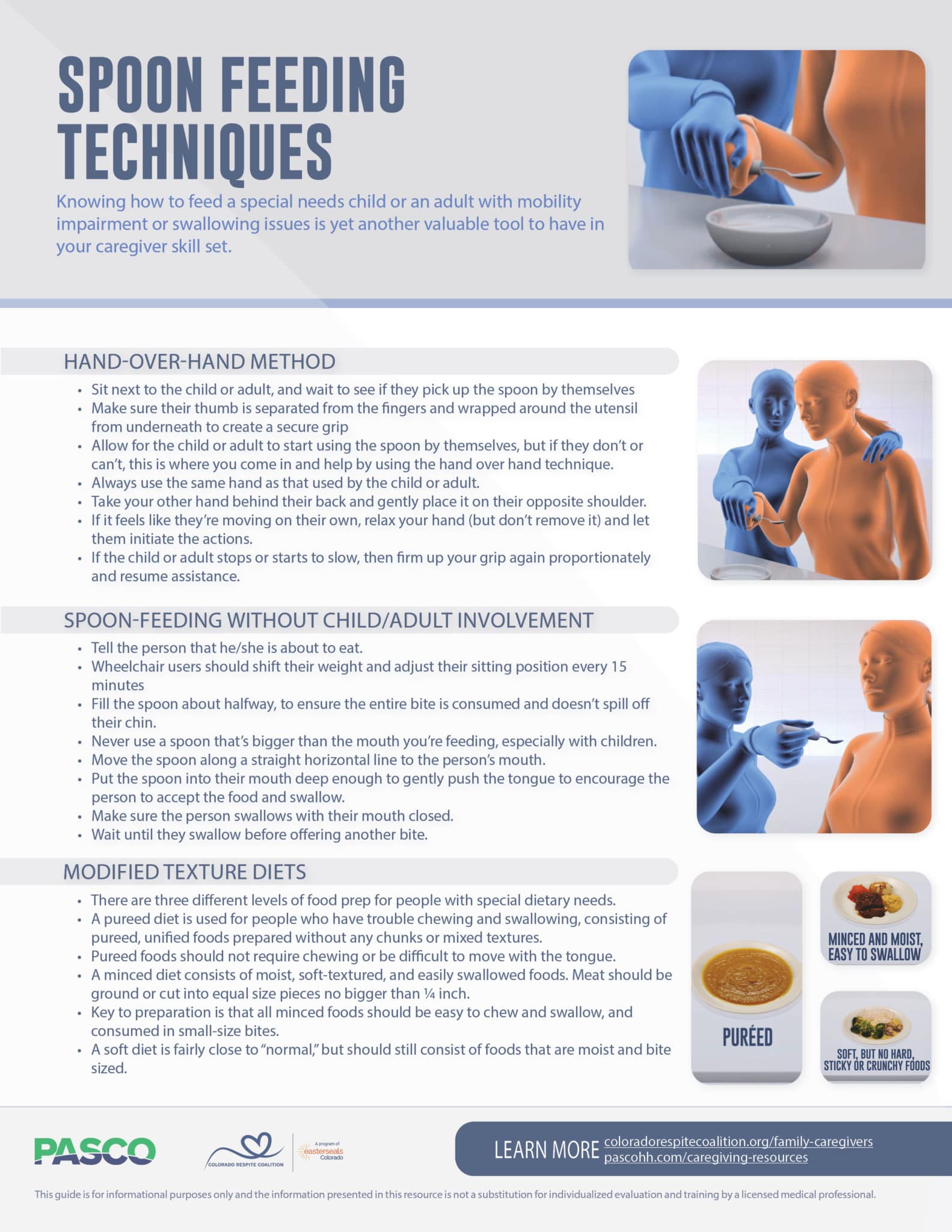- Sit next to the child or adult, and wait to see if they pick up the spoon by themselves
- Make sure their thumb is separated from the fingers and wrapped around the utensil from underneath to create a secure grip
- Allow for the child or adult to start using the spoon by themselves, but if they don’t or can’t, this is where you come in and help by using the hand-over-hand technique.
- Always use the same hand as that used by the child or adult.
- Take your other hand behind their back and gently place it on their opposite shoulder.
- If it feels like they’re moving on their own, relax your hand (but don’t remove it) and let them initiate the actions.
- If the child or adult stops or starts to slow, then firm up your grip again proportionately and resume assistance.
Hand-Over-Hand Method

Spoon Feeding Without Child or Adult Involvement
- Tell the person that he/she is about to eat.
- Wheelchair users should shift their weight and adjust their sitting position every 15 minutes
- Fill the spoon about halfway, to ensure the entire bite is consumed and doesn’t spill off their chin.
- Never use a spoon that’s bigger than the mouth you’re feeding, especially with children.
- Move the spoon along a straight horizontal line to the person’s mouth.
- Put the spoon into their mouth deep enough to gently push the tongue to encourage the person to accept the food and swallow.
- Make sure the person swallows with their mouth closed.
- Wait until they swallow before offering another bite.

Modified Texture Diets
- There are three different levels of food prep for people with special dietary needs.
- A pureed diet is used for people who have trouble chewing and swallowing, consisting of pureed, unified foods prepared without any chunks or mixed textures.
- Pureed foods should not require chewing or be difficult to move with the tongue.
- A minced diet consists of moist, soft-textured, and easily swallowed foods. Meat should be ground or cut into equal size pieces no bigger than ¼ inch.
- The key to preparation is that all minced foods should be easy to chew and swallow, and consumed in small-size bites.
- A soft diet is fairly close to “normal,” but should still consist of foods that are moist and bite-sized.

